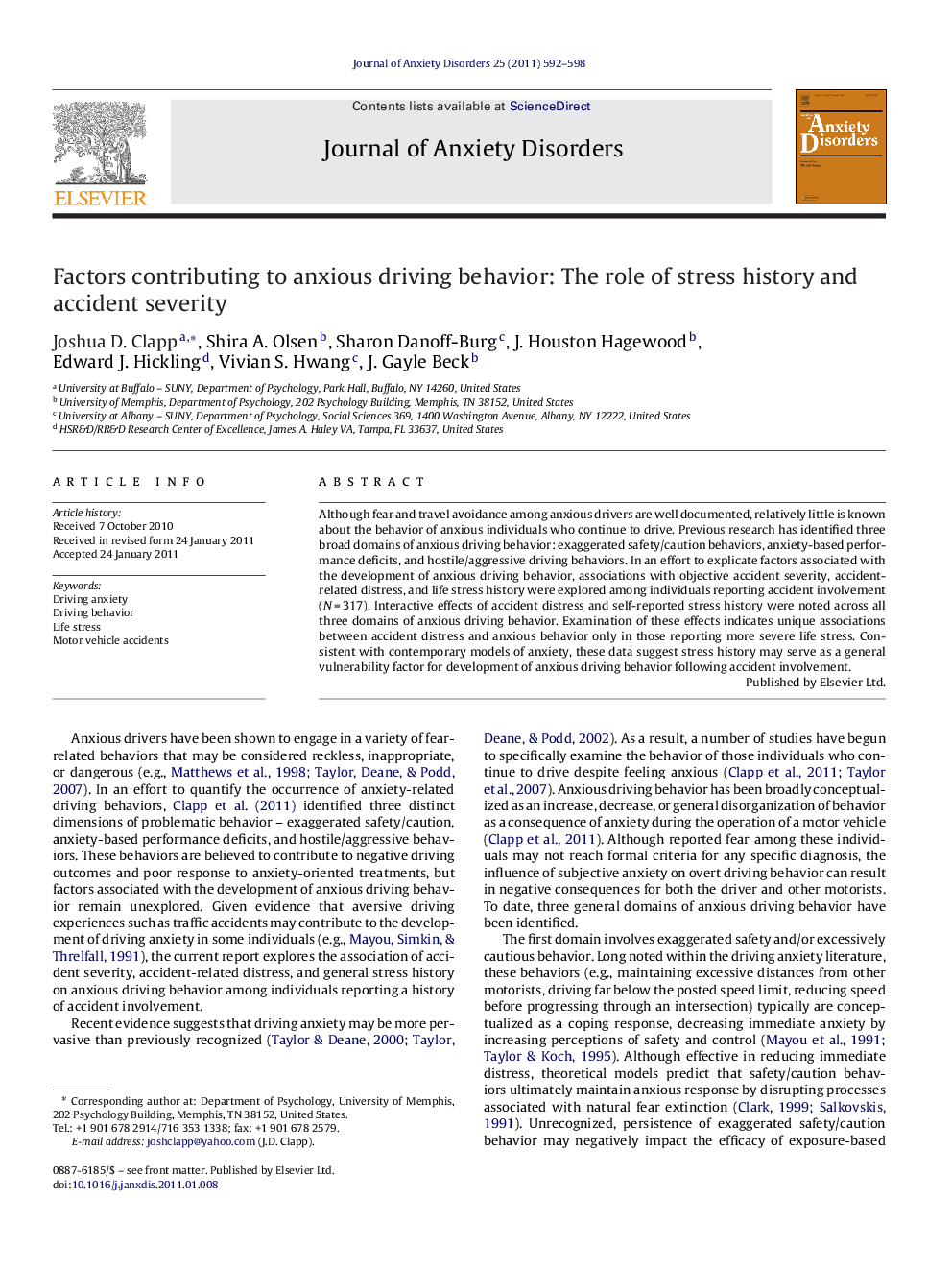| کد مقاله | کد نشریه | سال انتشار | مقاله انگلیسی | نسخه تمام متن |
|---|---|---|---|---|
| 909740 | 917306 | 2011 | 7 صفحه PDF | دانلود رایگان |

Although fear and travel avoidance among anxious drivers are well documented, relatively little is known about the behavior of anxious individuals who continue to drive. Previous research has identified three broad domains of anxious driving behavior: exaggerated safety/caution behaviors, anxiety-based performance deficits, and hostile/aggressive driving behaviors. In an effort to explicate factors associated with the development of anxious driving behavior, associations with objective accident severity, accident-related distress, and life stress history were explored among individuals reporting accident involvement (N = 317). Interactive effects of accident distress and self-reported stress history were noted across all three domains of anxious driving behavior. Examination of these effects indicates unique associations between accident distress and anxious behavior only in those reporting more severe life stress. Consistent with contemporary models of anxiety, these data suggest stress history may serve as a general vulnerability factor for development of anxious driving behavior following accident involvement.
Research highlights
► Among individuals reporting involvement in traffic accidents, accident distress and life stress history held an interactive association with frequency of anxiety-related driving behavior.
► Accident distress was associated with frequency of exaggerated safety/caution behavior, anxiety-based performance deficits, and hostile/aggressive driving behavior only among participants reporting excessive stress history.
► Subjective accident severity evidence no association with frequency of anxious driving behavior.
Journal: Journal of Anxiety Disorders - Volume 25, Issue 4, May 2011, Pages 592–598